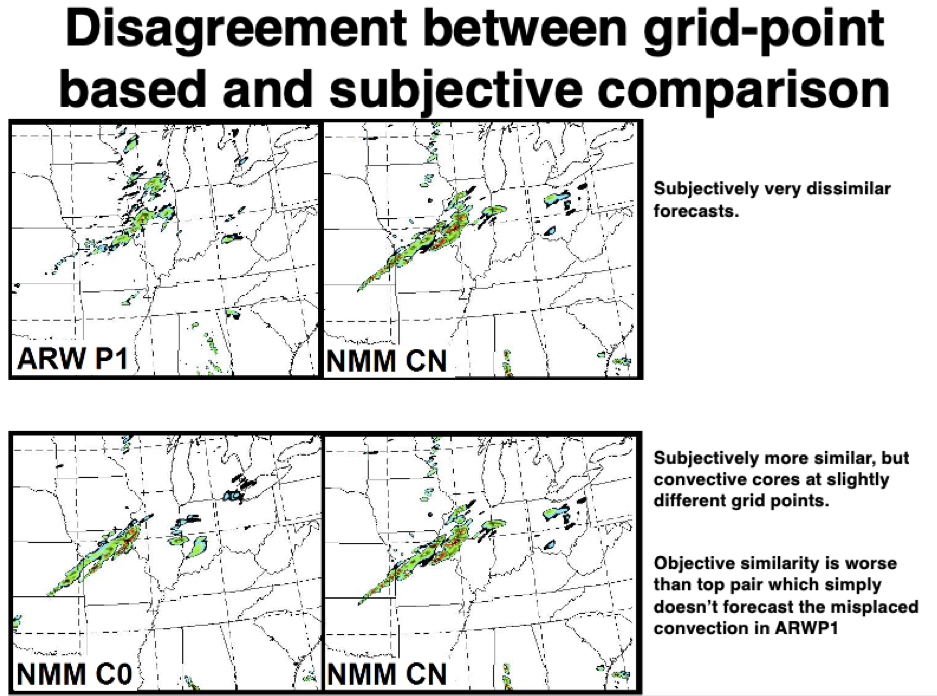[Introduction]
Convection-allowing model forecasts can provide forecasters with guidance on approximate location of convection initiation, convective mode, and degree of upscale organization of specific convective systems. Traditional verification metrics are often not well suited to objectively evaluate the performance of the model guidance in terms of these aspects of the forecast. For example, gridpoint-based metrics are highly sensitive to small spatial displacement of high amplitude features such as convective storms, even when such displacements are not very relevant for the end-user.

Neighborhood based metrics can alleviate the spatial displacement issue, but have the inherent limitation of also smoothing out convective scale details. MAP lab conducts research on the development of novel verification methods, including neighborhood and object-based methods, for objective evaluation of convection-allowing forecast performance that conform to the forecast aspects of interest to operational forecasters. Examples of recent research on this topic include:
| 1.Object-based verification of deterministic forecasts | | | 2.Object-based ensemble probabilistic forecast generation and verification | | |
* ======================================================================== *
Highlights of Recent and Ongoing Research
[Object-based verification of deterministic forecasts]
Other related papers Johnson, A., X. Wang, et al. (2011); Johnson and Wang (2012); Johnson, A., X. Wang, et al. (2013)

[Object-based ensemble probabilistic forecast generation and verification]
From Johnson, A., X. Wang, et al. (2020)
Other related papers Wilkins, A., A. Johnson, X. Wang, et al. (2021)



